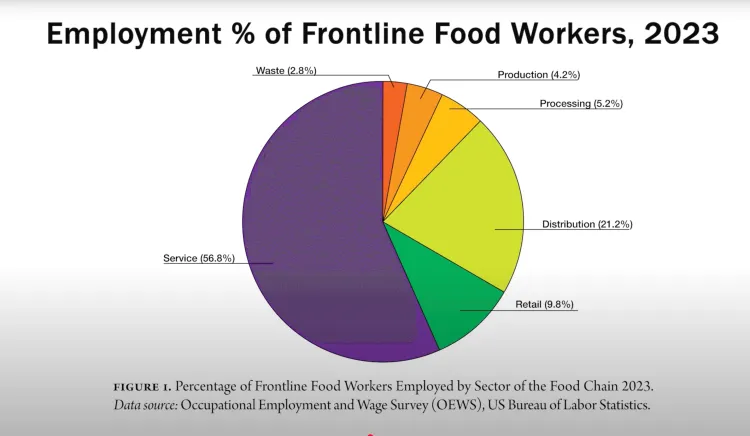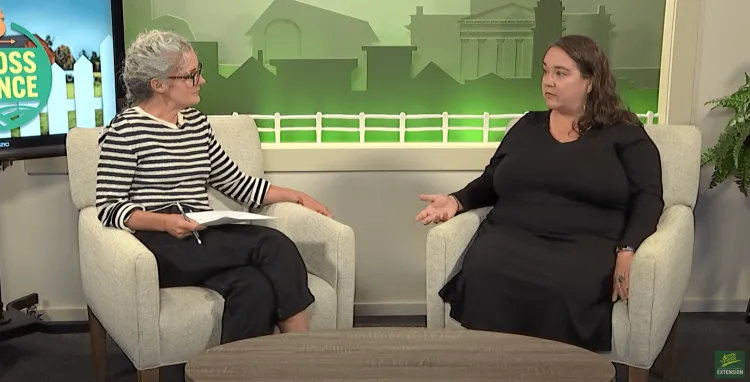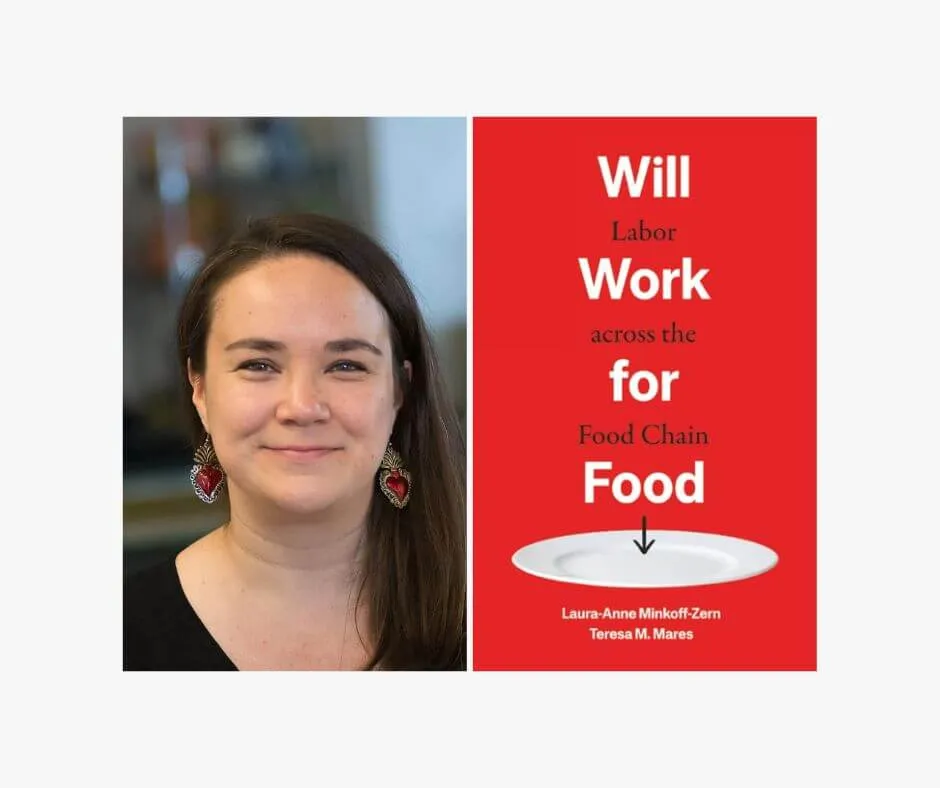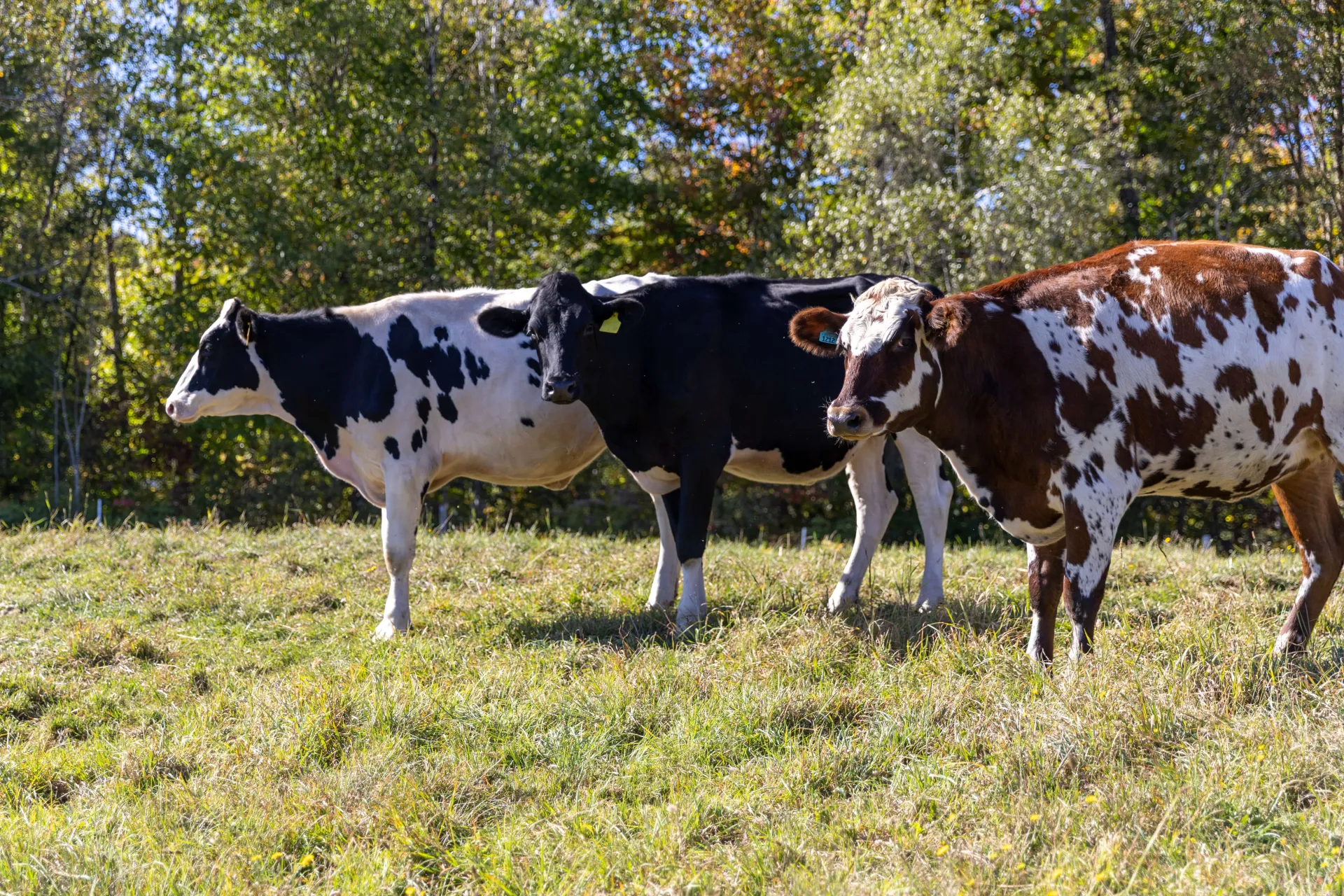Food is essential, but so too is the labor it takes to grow, harvest, transport, cook and serve every meal we eat. Yet, labor is often overlooked in conversations about our food systems. In the new book, “Will Work for Food: Labor Across the Food Chain," Dr. Teresa Mares, a researcher and associate professor of anthropology at the University of Vermont and Gund Institute Faculty Fellow, explores how improving labor standards, especially among frontline workers, is key to creating both more just food chains and a more equitable food system. Mares recently spoke about the book on the television program “Across the Fence,” co-produced by UVM Extension and WCAX-TV, Channel 3. Here are some key takeaways from the conversation:
Why Examine Labor in the Food System?
“My research over the last 20 years has looked at the intersections of migration and food. Ranging from questions like: How do immigrants living in the United States meet their food needs? How do they make sure their cultural connections to food stay constant? More recently, that has moved into looking at the experiences of food workers and farm workers. I came to UVM in 2011. I was hired in the anthropology department and started doing research on the experiences of dairy workers in the state, especially looking at how they were accessing food in really rural, often very cold environments. That was one question I had among many about food … but I couldn’t ignore the labor dimensions of those questions.”
Food Chain vs. Food Systems
“We chose ‘food chain’ for this book because both my colleague and I have been inspired by the Food Chain Workers Alliance (FCWA). This is a national organization that advocates for better labor protections, better healthcare, better everything for food workers. We decided to frame our work because of inspiration from FCWA. We can think about food systems from biophysical dimensions, or seeds, all of which involve labor, but we chose the food chain because it allows us to think about the steps that food takes through different sectors of the food system.”
Dimensions of the Food System
“Critical food systems thinkers have been arguing that, yes ecological dimensions of food are important—environmental along with those ecological. Also financial: if farmers aren’t staying in business, we don’t have a sustainable food system. But, all of those questions are around equity, whether it's about, are people well fed? Are food and farm workers themselves getting enough food? Within food movements we’ve seen a lot of focus on ecological and economic dimensions, sometimes at the expense of those social dimensions. If we’re thinking about comprehensive reforms and transformations for the food system, we have to think about all those dimensions.”
The Myth of “Unskilled Labor”
“We make a point in our book that it’s [food labor] not about skill, rather a lack of social value. When we look at that skill [food labor], the deep environmental knowledge and the social skills you have to have in the food system, there is not a lack of skill. It reflects more about how our society values [food] work. Growing and cooking your own food takes a tremendous amount of skill and knowledge, and I think that’s something that is devalued in society.”
"The Bear:" Overlaps in Academia and Pop Culture
“What I appreciate about 'The Bear' is that it more accurately portrays how high-end chefs often receive the majority of the credit, when in reality there are a lot of people in the back of the house. Where food media doesn’t always show the complexity of back-of-the-house labor—the relationships and struggles. We have this lone artist conception of a chef, a white male chef typically. The show does a good job of showing how dependent restaurants are on folks of color and immigrants. That is where it’s a bit more accurate than some of the other representations.”

Labor in the Food System
“The majority of food workers are in service [56%], and that has changed over time. That is where we’ve seen the most growth. It makes sense given what our own food habits look like these days. Service work is primarily performed by women, immigrants, and folks of color. That comes back to our social value: how do we value these workers and the work that they do? Those jobs, while they are not unskilled, are often low entry; they are places where you can become trained fairly quickly and you have a lot of transferability. We do see a disproportionate number of people of color working in the food system. How is labor justice and food justice also a project of racial justice?”
Food Labor: Frontline and Essential
“This book was a COVID project. Early 2020, we started seeing conversations about essential labor and where we get our food from. If we see this big disruption to our food system, who is doing that work, often risking their own lives? With ‘essential’ work, we do see a recognition of how core and critical they are, to the point where we had executive orders demanding that meatpacking plants were kept open. From the labor side of things, ‘essential’ can also translate to ‘sacrificial.’ We saw disproportionate rates of COVID infection and deaths due to COVID in places like meatpacking facilities. The idea of ‘essential’ is one we dig into in the book. The labor of these workers is core to our nation, core to our own food security, but that often means their lives are on the line. That can be devastating.”
The Fight for $15
“The fight for $15 has been a really powerful organization arguing for a livable wage that is no less than $15 an hour. The number 15 is a livable wage at bare minimum. This movement has been really powerful in galvanizing food service work, but we don’t want to say that is the only aspiration to look for.”

Feeding a Country
“The question of feeding the nation is one that brings up the ongoing attacks on SNAP benefits and school lunches, tariffs and so many topics we are struggling with right now. There is enough food to go around, it’s not a question of production, it’s about the middle steps—distribution, logistics, and food waste. It is a difficult task because of how the food system is structured. We do need to redesign to make sure there’s more equity across the food system, but also to ensure the food that is grown is getting into the bellies of people.”
Harvest of Shame
“America is well fed in comparison to other nations, but when we break down where the money in the food system goes, and the types of food being consumed, we see many disparities. Food is a really complex system among many complex systems. When you look at dairy, for example, it is the primary product for agricultural revenue in Vermont. The dairy industry has consolidated immensely, and it’s become very hard for small dairy farms to stay afloat. The few that have remained over time have gotten bigger and bigger and have become corporatized. They're competing against these really large-scale dairies in the Midwest and in California. All of our food intake is often dependent on that corporate food system, where we see a lack of transparency. We don’t see where those profits are going and those gross inequalities in pay between frontline workers and the CEOs. We dig into how wealthy those top tier executives are in comparison to those frontline workers in our book.”
Final Message, Next Steps
“Locally, we can follow organizations like Migrant Justice, and think about supporting them. It is important to start asking questions and developing curiosity about our own food system, about our own experiences of being a food worker and how that connects to others. That is a great place to start.”
“Will Work for Food: Labor across the Food Chain” by Laura-Anne Minkoff-Zern and Teresa Mares was released last month. You can learn more and find out where to buy the book here.
You can watch the full interview with Mares on “Across the Fence” here.



